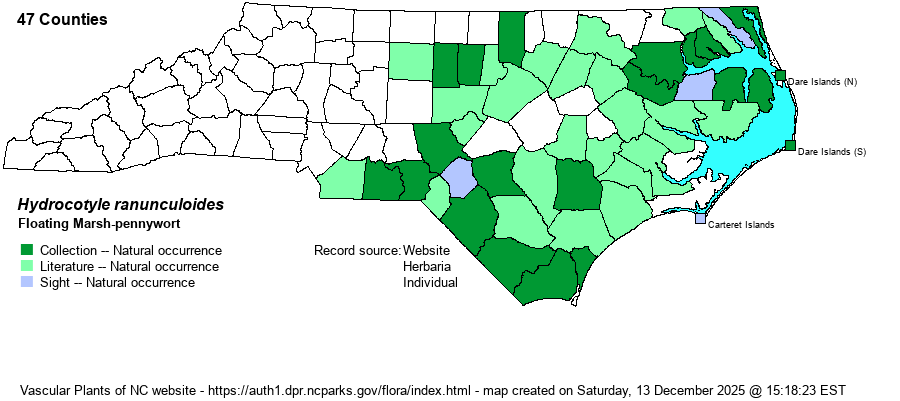| Author | L. fils | |
| Distribution | Present over the Coastal Plain, and now spreading westward into the east-central Piedmont; currently known west to Granville, Guilford, and Union counties. When RAB (1968) was published, there were only about nine known counties, all in the eastern half of the Coastal Plain. The iNaturalist website contains verified photos now (2025) from most counties in the eastern half of the state.
This is a widespread, mostly Coastal Plain species, ranging from PA south to FL, and west to eastern TX. It also occurs in the Pacific states. | |
| Abundance | Formerly rare to uncommon, but now strongly increasing and spreading inward into the Piedmont. Locally quite common in the northeastern Coastal Plain (south to Dare and Martin counties), and fairly common to locally common in the southwestern portions from New Hanover west into Anson counties). Somewhat spotty range elsewhere, but can be very common in some impoundment lakes and streams west to Wake County. As a result, the website editors feel that a State Rank of S4 is appropriate now, if not even S5. | |
| Habitat | This is an aquatic species of shallow water, found around lake and pond margins, in slowly flowing blackwater rivers and creeks, in canals, and in swamp pools. It often grows with or near the aggressive exotic Alligatorweed (Alternathera philoxeroides), but seems to be doing well and often appears as an exotic species itself. | |
| Phenology | Blooms from April to July, and fruits shortly after flowering. | |
| Identification | This aquatic species, but rooted in the ground, has dark green, fleshy leaves (looking almost evergreen), on long stalks; the petiole joins the blade on the leaf underside, near an edge. The blades are usually held above water level, but can be floating. From above, the leaf has some moderate incisions (about halfway to the leaf middle), often cutting the blade into 3-5 lobes, and the margins are slightly scalloped. The flower cluster is a simple umbel, on a short stalk only half as long as a leaf petiole, and thus you likely will overlook the tiny white flowers on it. This species almost always grows in large patches, typically several square meters or more, and it is the primary Hydrocotyle found growing in stagnant water. The other species in the genus have leaf blades more orbicular and grow in mud or wetlands, but seldom in standing water. | |
| Taxonomic Comments | None
| |
| Other Common Name(s) | Floating Pennywort, Swamp Water-pennywort
| |
| State Rank | S3 [S4] | |
| Global Rank | G5 | |
| State Status | | |
| US Status | | |
| USACE-agcp | OBL link |
| USACE-emp | OBL link |

